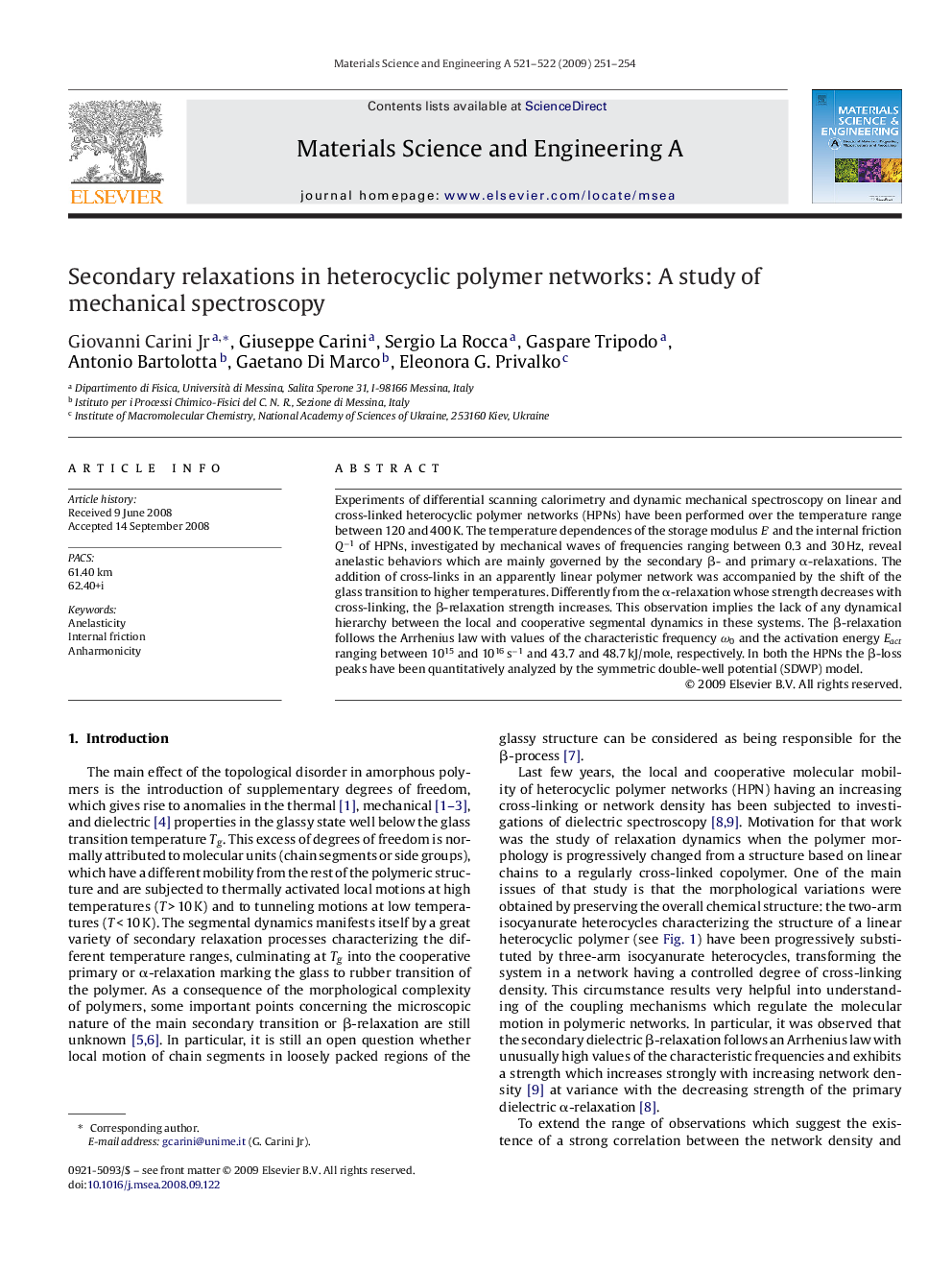| Article ID | Journal | Published Year | Pages | File Type |
|---|---|---|---|---|
| 1580089 | Materials Science and Engineering: A | 2009 | 4 Pages |
Abstract
Experiments of differential scanning calorimetry and dynamic mechanical spectroscopy on linear and cross-linked heterocyclic polymer networks (HPNs) have been performed over the temperature range between 120 and 400 K. The temperature dependences of the storage modulus Eâ² and the internal friction Qâ1 of HPNs, investigated by mechanical waves of frequencies ranging between 0.3 and 30 Hz, reveal anelastic behaviors which are mainly governed by the secondary β- and primary α-relaxations. The addition of cross-links in an apparently linear polymer network was accompanied by the shift of the glass transition to higher temperatures. Differently from the α-relaxation whose strength decreases with cross-linking, the β-relaxation strength increases. This observation implies the lack of any dynamical hierarchy between the local and cooperative segmental dynamics in these systems. The β-relaxation follows the Arrhenius law with values of the characteristic frequency Ï0 and the activation energy Eact ranging between 1015 and 1016 sâ1 and 43.7 and 48.7 kJ/mole, respectively. In both the HPNs the β-loss peaks have been quantitatively analyzed by the symmetric double-well potential (SDWP) model.
Related Topics
Physical Sciences and Engineering
Materials Science
Materials Science (General)
Authors
Giovanni Jr, Giuseppe Carini, Sergio La Rocca, Gaspare Tripodo, Antonio Bartolotta, Gaetano Di Marco, Eleonora G. Privalko,
